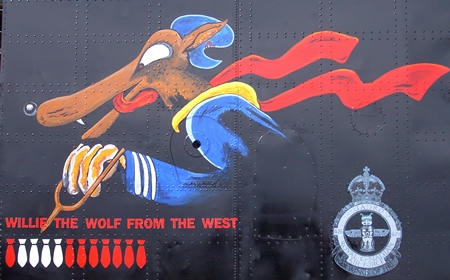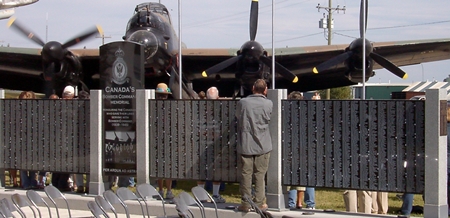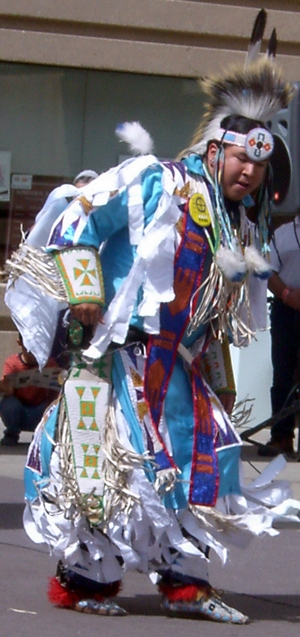In memory of
Flight Sergeant J.A.B.G. (Alf) Galloway, R.C.A.F.
R/69154
March 9, 1942

Update: Effective May 8, 2010 the new name for the museum is the Bomber Command Museum of Canada.
Today the Nanton Lancaster Society Air Museum hosted an event to honor Americans who served in the Royal Canadian Air Force (R.C.A.F.) during World War II.
Canada declared war on September 10, 1939. Before the United States declared war against the Nazis in December 1941, approximately 9,000 Americans joined the RCAF. Of these, about 800 were killed in RCAF service – 379 while serving with Bomber Command.

Canada’s Bomber Command Memorial lists 10,643 names and includes all the Canadians who were killed serving with Bomber Command as well as those of other nationalities who died while serving with the RCAF in Bomber Command.
“They were colorful, those volunteers – professionals and playboys, convicted felons and husbands on the run, idealists and mercenaries, kids seeking adventure, youngsters seeking nothing but an opportunity to fly, middle-aged men looking for work – and to all of them, the RCAF’s need was their golden opportunity.” – Spencer Dunmore, “Wings for Victory”
I listened to some of the “old boys” relate memories of their comrades filled with laughter and joy and resignation. I didn’t hear one say that he wouldn’t do it all again.

In memory of
Flight Sergeant J.A.B.G. (Alf) Galloway, R.C.A.F.
R/69154
March 9, 1942

 Before the Egyptian pyramids, before Stonehenge, North American Indians drove buffalo herds to their death over prairie cliffs.
Before the Egyptian pyramids, before Stonehenge, North American Indians drove buffalo herds to their death over prairie cliffs.

 What buildings remained have been removed to Del Bonita, across the Milk River and 12 miles to the east, where a store and post office are in the same building and still serves the local area.
What buildings remained have been removed to Del Bonita, across the Milk River and 12 miles to the east, where a store and post office are in the same building and still serves the local area. This pathetic excuse for a man – oops, err, I mean lawyer and judge – appears to be a steaming pile of the color of his own excrement.
This pathetic excuse for a man – oops, err, I mean lawyer and judge – appears to be a steaming pile of the color of his own excrement.